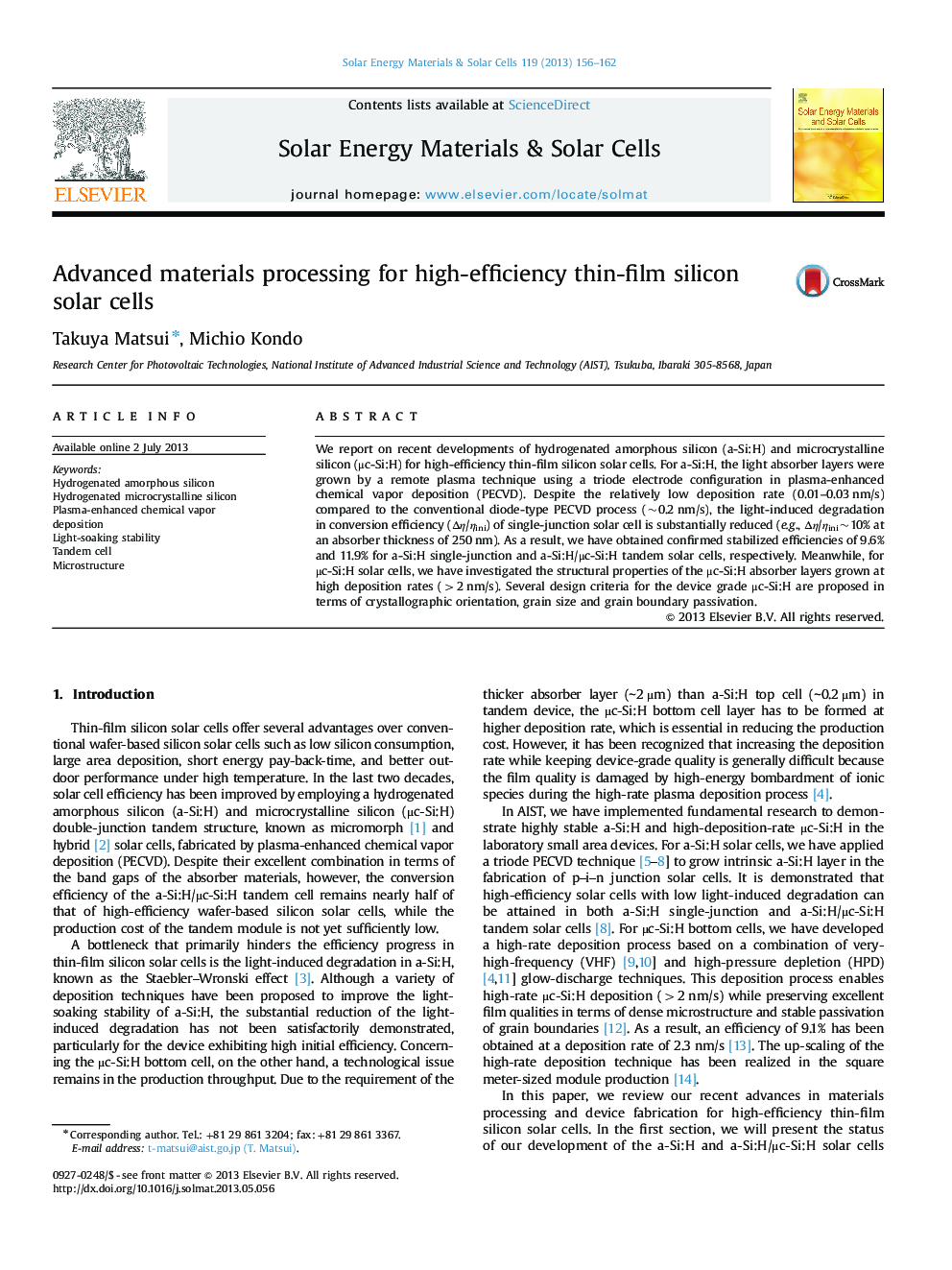| Article ID | Journal | Published Year | Pages | File Type |
|---|---|---|---|---|
| 6535964 | Solar Energy Materials and Solar Cells | 2013 | 7 Pages |
Abstract
We report on recent developments of hydrogenated amorphous silicon (a-Si:H) and microcrystalline silicon (μc-Si:H) for high-efficiency thin-film silicon solar cells. For a-Si:H, the light absorber layers were grown by a remote plasma technique using a triode electrode configuration in plasma-enhanced chemical vapor deposition (PECVD). Despite the relatively low deposition rate (0.01-0.03 nm/s) compared to the conventional diode-type PECVD process (~0.2 nm/s), the light-induced degradation in conversion efficiency (Îη/ηini) of single-junction solar cell is substantially reduced (e.g., Îη/ηini~10% at an absorber thickness of 250 nm). As a result, we have obtained confirmed stabilized efficiencies of 9.6% and 11.9% for a-Si:H single-junction and a-Si:H/μc-Si:H tandem solar cells, respectively. Meanwhile, for μc-Si:H solar cells, we have investigated the structural properties of the μc-Si:H absorber layers grown at high deposition rates (>2 nm/s). Several design criteria for the device grade μc-Si:H are proposed in terms of crystallographic orientation, grain size and grain boundary passivation.
Keywords
Related Topics
Physical Sciences and Engineering
Chemical Engineering
Catalysis
Authors
Takuya Matsui, Michio Kondo,
